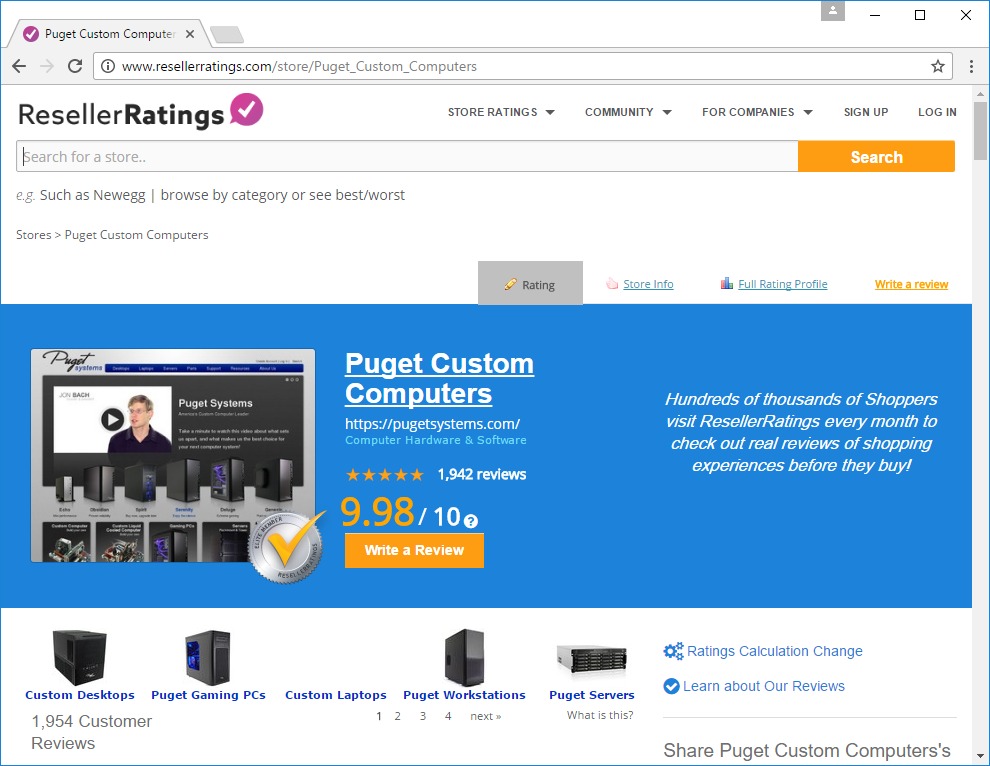As a customer of Puget Systems, the best way you can help us is to give us your feedback and to tell others about us. A great way to do both at the same time is to submit your opinions about us on a public ratings site like Reseller Ratings!


As a customer of Puget Systems, the best way you can help us is to give us your feedback and to tell others about us. A great way to do both at the same time is to submit your opinions about us on a public ratings site like Reseller Ratings!
When Intel first debuted the Core i7 processor line, code-named Nehalem, in late 2008 it made perfect sense. This line of quad-cores brought several new technologies: Turbo Mode, integrated memory controllers, triple-channel RAM, and Hyperthreading (making a comeback from the Pentium 4 era). There were three processors at launch, a 920, 940 and 965 – each slightly faster than the one before it, with the ‘5’ at the end of the last denoting that it was an Extreme Edition chip with some unlocked settings to help with overclocking. Over time the 940 was replaced with a 950, and then 960; the 965 also got an upgrade in the form of a 975. The naming scheme now isn’t so simple — let’s take a look.
It has been almost two years since I last wrote on the subject of TV tuners in computers, and a lot has changed since then. Over-the-air TV signals have finally gone all-digital, and many cable providers have reduced or dropped their analog cable lineups as well. These transitions, coupled with the release of Windows 7, mean that this year should be an exciting one for those of us with home-theater PCs.
We all seem to like our products with lots of features, especially when it comes to computers. After all, the personal computer is supposed to be the most versatile piece of electronics that you own, right? How can it be versatile without a long list of features? When it comes down to deciding what product to buy, one of the first things we do is put the features side by side, and see which gives us more capabilities for the dollar. What are we missing?
If you’re connected with me on Twitter or Facebook, you probably have noticed my recent posts about how great business has been, and how we’ve been more and more busy these past months. It has been a great feeling to once again focus my efforts on expanding our capacity to meet demand. But why have our sales picked up so heavily in the last quarter? Is this due to a gain in market share, or is this something bigger? I don’t claim to have the answers, but I would like to go over the data and our theories.
When we began development of our Echo PC, we quickly saw how NIVIDA ION would bring a new life to home theater PCs. The small form factor, low power draw, and near-silent operation are the perfect makings for a computer in the living room. As more content is put online, the PC is fast becoming a cheap alternative for home entertainment. But the strength of NVIDIA ION lies in the GPU, and applications that take advantage of GPU acceleration are anything but mature. In our testing, we found that ION was extremely well suited for DVD/BLU-RAY playback, and for Netflix. But Hulu — the final piece in the trio of current online entertainment — was not ready. Fullscreen playback was not acceptable on ION. We knew that NVIDIA and Adobe were working together on the problem. We waited.
We’ve been hard at work over the past few months: designing, coding, testing, fixing. Although we’ve received lots of positive feedback on various functionality of the old site (configuration utility, order status updates, etc), we’ve also been less than pleased with the dated design and limited, navigational ability of the old design. What we’re unveiling today is the first step a vast improvement on top of what was already a great base.
A few years back, Ageia Technologies launched a product designed to help handle the increasingly complex physics calculations which were becoming popular in modern games. They named this product “PhysX”, and it was the worlds first dedicated physics card. Enthusiasts were excited, and many thought that this technology was set to be the next piece of essential hardware for enthusiast systems. We decided to independently test the Nvidia PhysX platform, and share our results.
It seems like everyone has been excited about the recent release of Intel’s second-generation solid state drives (SSDs) this week. I am the proud owner of one of the first-gen models, and the idea that more affordable models will help more people to adopt this technology is just cause for celebration.
It came as quite a shock to me, then, when we were told to hold delivery of the drives to end-users this morning – just before our first shipment came in to the Puget warehouse.